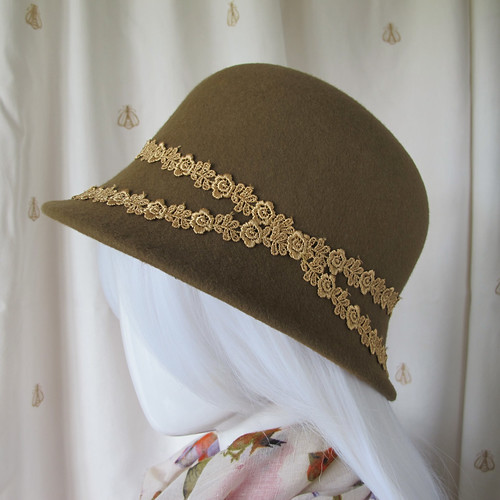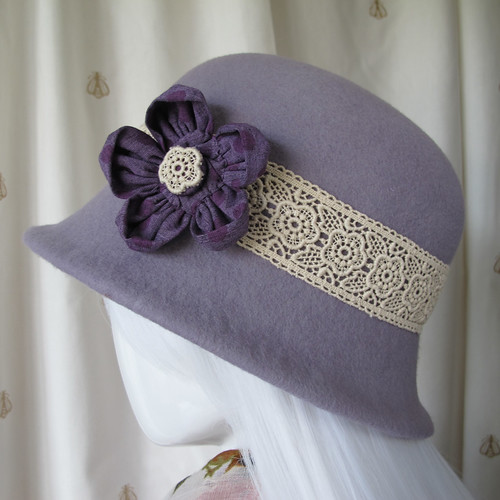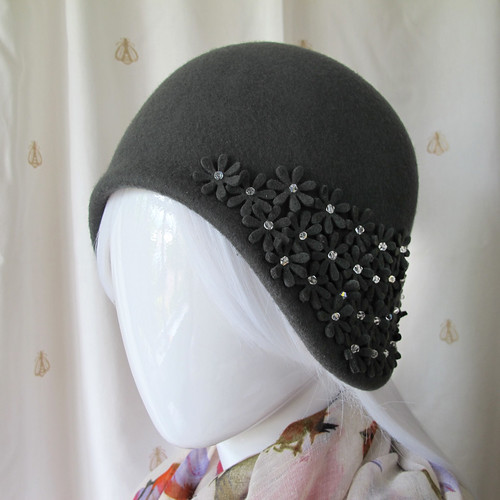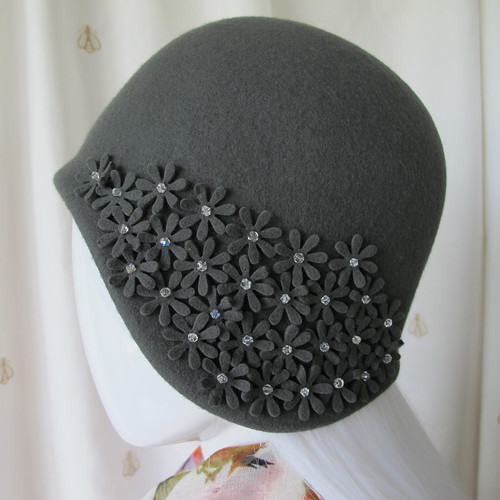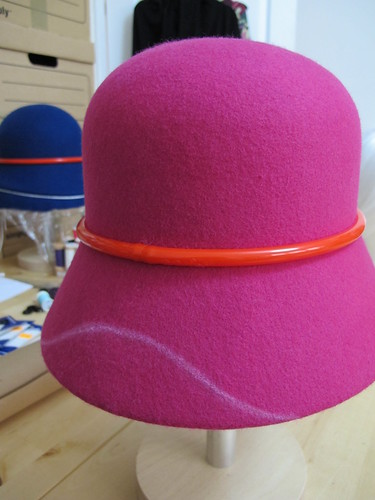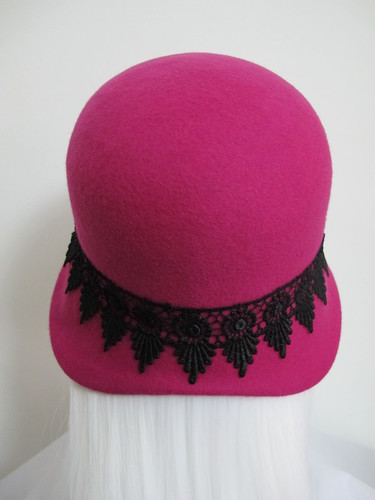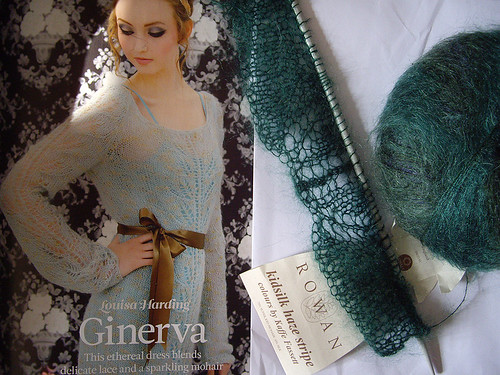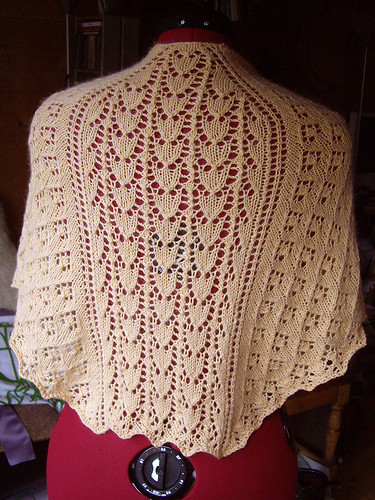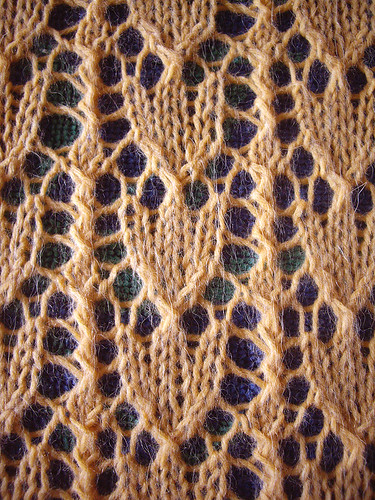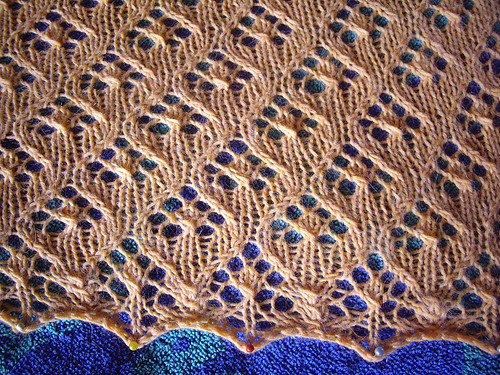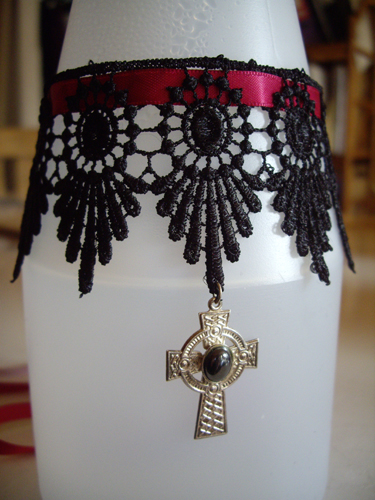Okay, that’s not strictly true, and I don’t even really know what I’ve been doing with myself over the last fortnight apart from working a lot and feeling a bit ill, but I have just finished a little flurry of hats, so here they are.
The one above is the colour of a perfect cup of builder’s tea, trimmed with gold lace that took weeks and weeks to arrive from China. I won’t be ordering that lace again, but I’m making good use of it while I’ve got it. This one in particular is very pretty, and I have enough left over for at least one more hat.
This one’s more the colour of coffee, or really good dark chocolate. This is also lace-from-China, which I’ve altered slightly from its original form. It had a segmented piece at the top which is designed to have ribbon woven through it, but in this case I preferred it without. The loopy bits are all couched down securely to the crown of the hat, but the teardrop shapes are left loose to allow a bit of movement.
I’m hesitant to describe these two hats as “Steampunk” just because they happen to be brown and gold, but perhaps they’ll be the perfect addition to somebody’s outfit.
I wasn’t at all sure what I was going to do with this lavender coloured felt, and then I spotted this gorgeous organic cotton lace from Lancaster & Cornish. Okay, so it’s a lot more expensive than the Chinese lace (in this particular instance, fifteen times more expensive!!), but now I’ve worked with it I’m in no doubt that it’s absolutely worth it. The quality is amazing, it’s organically produced, and to be honest it’s just plain gorgeous.
The flower embellishment is also organic – a cotton and bamboo blend from the Organic Textile Company. I have quite a lot of little scraps of this fabric left over from a dress, so I can feel a few more of these flowers coming on – perhaps as brooches.
And this… this is what came off my new cloche block from Guy Morse-Brown. Isn’t it just gorgeous? I realise I seem to be singing my own praises here, but really it’s the hat block that does all the hard work, and Owen Morse-Brown (who makes the wooden blocks) has carved an absolute work of art. I’m in love with the asymmetrical shape, the way the crown hugs the head, and the cutaway at the back of the neck which makes it incredibly easy to wear. I’m keeping this one, and I’ll definitely be making more!
The flowers are made from the offcuts of felt that I trimmed away from the brim, and they’re cut out with Sizzix paper punches. It’s quite hard work to hammer the punches through the thick felt – they’re not really designed for that kind of punishment – but the flowers have come out with nice clean edges. The centres are Swarovski crystals. (I’m trying not to think about how much it looks like one of those flowery swimming caps.)
The hats are all on Etsy, should you fancy a closer look.
I’m now at that awkward stage once again where I need somebody to buy a hat (or a bunch of smaller stuff from the Emporium) before I can afford to buy any more felt hoods to make new hats with. It seems unlikely that wool felt hats are going to fly off the shelves in the middle of summer, but at least it’s not as though I have a shortage of other materials to make things from in the meantime. I have some carded wool batts on order to make some felt which will hopefully be heavy-duty enough for slippers or hats, I have lots of organic cotton to turn into tunic tops, and I have plans to make a few things for myself. Summer dresses, perhaps. I certainly won’t be short of things to do!

